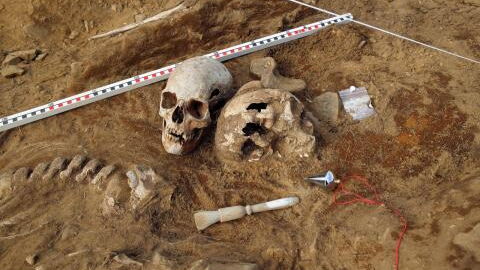Mankind has been fascinated with the secrets buried in Egyptian tombs, and most of all with mummies, which continue to persist as mysterious relics in museums and as legends in popular culture.
Discover our latest podcast
In some fascinating development, scientists have been able to piece together some fascinating details about a mummy who was recovered from her tomb in Egypt. The Warsaw Mummy Project has reconstructed the face of a mummy who is known as ‘the Mysterious Lady,’ and the results are an incredible window into the life of this human who lived on this Earth centuries ago.
The significance of this work lies in how it humanises ancient Egyptians by reconstructing a crucial part of what constitutes someone’s identity: the face.
Posted by Warsaw Mummy Project Human on Tuesday, November 8, 2022
Posted by Warsaw Mummy Project Human on Tuesday, November 8, 2022
The Mysterious Lady
As per the Facebook caption shared by the archaeologists from Warsaw Mummy Project, two forensic specialists crafted facial features of the mummy known as ‘the Mysterious Lady,’ using both 2D and 3D techniques.
The mummy was first discovered in a royal tomb in 1800s. The mummy was actually pregnant and it has been discovered that she was probably suffering from cancer.
With regard to the importance of the story of this mummy, the caption goes on to say,
Her story touches on the most crucial aspects of life: birth and death. while also going further, to explore the after-death fate of the mother and her unborn child.
Posted by Warsaw Mummy Project Human on Tuesday, November 8, 2022
The Warsaw Mummy Project
The caption also quotes Chantal Milani, an Italian forensic anthropologist and member of the project, who says,
Our bones and the skull in particular, give a lot of information about the face of an individual. Although it cannot be considered an exact portrait the skull like many anatomical parts is unique and shows a set of shapes and proportions that partially will appear in the final face.
The Warsaw Mummy Project was first initiated in 2015 by a group of bio-archaeologists from the University of Warsaw with the aim of examining human and animal mummies from ancient Egypt at the National Museum in Warsaw.
They state,
For ancient Egyptians, like us, the face was an integral part of one’s identity. By reconstructing their faces we are “bringing them back to life” and restoring their identities.
Sources used:















